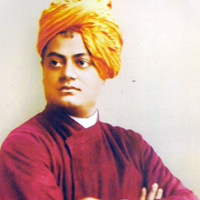1893: Year of the Yogi: a film on Swami Vivekananda’s arrival in America that introduced yoga and Indian spirituality
By Raj Shah
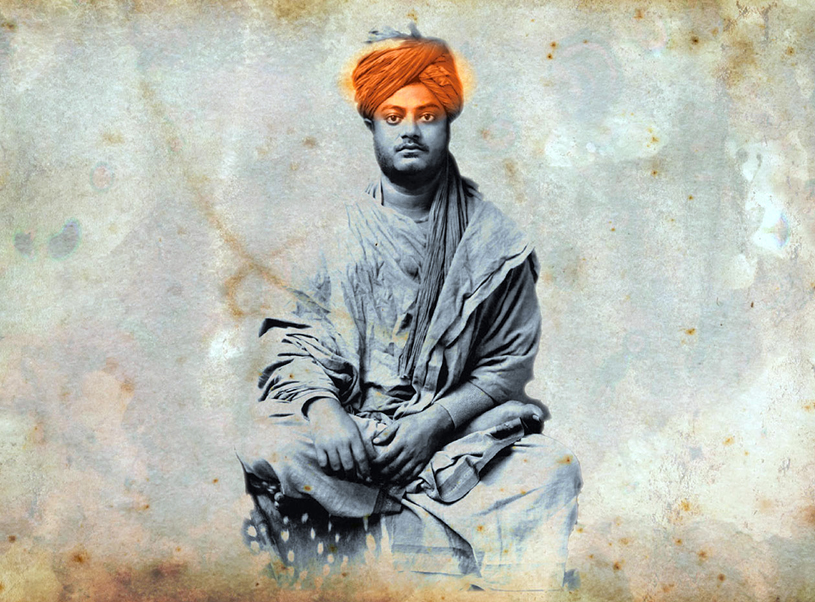
Talking about a film on Swami Vivekananda on his birthday would be not only most appropriate but also symbolic and impactful. Swami ji’s birthday, which falls on January 12, is celebrated as National Youth Day in India, reflecting his enduring influence on the youth and his teachings on strength, vigor, and spirituality.
In 1893, Vivekananda, an Indian spiritual guru, attended a conference hosted by the World’s Parliament of Religions in Chicago and gave a historical speech. His opening words, “Sisters and Brothers of America,” won him a standing ovation. It would delve into his teachings, his interactions with other religious leaders, and the lasting impact of his work. Furthermore, in his speech, Vivekananda introduced Hinduism to America and called for an end to fanaticism and religious intolerance. He also desThe present conventioncribed yoga as a “science of the mind” and translated Yogic texts from Sanskrit into English.
Swami Vivekananda brought the wisdom of ancient India to America in 1893 through the practice of yoga. The American fabric has not undergone such a drastic transformation since the advent of Columbus, according to several conference attendees. Over the past 100 years, yoga has steadily become more and more ingrained in Western culture. This can be seen in movies like Star Wars and The Matrix, music from bands like Coldplay and the Beatles, literature ranging from Aldous Huxley’s Brave New World to countless best-selling self-help books promoting mindfulness and meditation, the use of Ayurvedic medicine, the rise in popularity of athleisure clothing, and the fact that there is a yoga studio on every Main Street in the United States.
Presenting the life and legacy of Swami Vivekananda, 1893: YEAR OF THE YOGI is a colorful animated film that combines historical video and interviews with influential figures in athletics, music, film, and religion. In keeping with Vivekananda’s central theme of inclusivity, the movie incorporates quotes from a wide range of writings, lectures, and letters that highlight how yoga is a popular choice for a variety of audiences. The narrative of the film is elevated by the aural tapestry created by modern Western artists that draws inspiration from ancient tradition and classical Indian music, which includes works by Swami himself. The best times for introspection and personal development are during difficult times, and 1893: YEAR OF THE YOGI, an artistic continuation of Vivekananda’s work, fulfills this purpose.
Nicholas Oscoff’s directorial venture, “1893: The Year of the Yogi,” promises to be a significant contribution to the cinematic exploration of yoga’s profound impact on Western culture. The film traces the historical roots of yoga’s journey to the West, particularly emphasizing Swami Vivekananda’s pivotal role in introducing the ancient Indian philosophy to American society.
Director Nicholas Oscoff expressed his personal views in a video interview with Indic Dialogue: “Meet the filmmakers of the upcoming movie “1893: The Year of the Yogi.”
https://www.youtube.com/watch?v=X1M0OCpszF4
Nicholas talked about his personal journey, fueled by a fascination with Indian philosophy and spirituality, which has evidently shaped the narrative of this documentary. His multicultural background and extensive travels, including repeated visits to India, seem to have deepened his understanding and connection to the subject matter. This personal resonance with the spiritual teachings of the East, paired with his professional background in international affairs and the film industry, positions him uniquely to tell this story.
Here are some key points I found particularly interesting from Nicholas’s interview:
- Personal journey: Oscoff describes his own early exposure to Indian philosophy through Deepak Chopra’s books, highlighting the initial spark that led him to explore India and its spiritual traditions.
- Cultural bridge: He mentions his multicultural upbringing with Egyptian and Italian roots, which likely contributed to his understanding of bridging Eastern and Western perspectives.
- Spiritual home: Oscoff speaks of India as his spiritual home and how being born in America allows him to “live with one foot in the East and one in the West.” This personal connection likely adds depth and authenticity to the film.
- Encounter with Sri Ramakrishna: The director’s introduction to Ramakrishna through a biography becomes a pivotal moment in his spiritual journey, leading him to further explore Vivekananda’s teachings.
The film’s focus on Swami Vivekananda, a key figure in bringing Eastern spirituality to Western consciousness, reflects a thoughtful approach to making this profound subject accessible and engaging to a Western audience. The inclusion of animation and interviews with leading Swamis suggests a rich, multi-dimensional exploration of the topic.
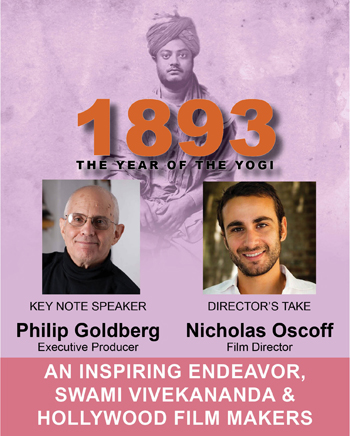 Here are some key points you are going to find in this historic documentary movie:
Here are some key points you are going to find in this historic documentary movie:
- Untold origin story: It emphasizes the film’s focus on showcasing Swami Vivekananda’s lesser-known role in introducing yoga to the West and the transformative impact he had.
- Interviews with diverse voices: The inclusion of interviews with leaders from various fields, including music, sports, and religion, promises a multifaceted perspective on Vivekananda’s teachings and their contemporary relevance.
- Archival footage and animation: The utilization of both archival footage and animation suggests a dynamic approach to storytelling, potentially making the film engaging for a wider audience.
- Historical accuracy: The webpage highlights the film’s commitment to historical accuracy, which is crucial for portraying Vivekananda’s life and impact with integrity.
“1893: The Year of the Yogi” not only aims to narrate the historical significance of yoga’s arrival in the West but also seeks to highlight the ongoing influence of Eastern spirituality on various aspects of Western culture, from popular entertainment to personal wellness practices.
This exceptional documentary movie focusing on Swami Vivekanand’s journey to the US is anticipated to be released in 2024, and its call for community support underlines its collaborative and timely nature. It seems to be more than just a film; it’s an invitation to participate in a cultural and spiritual dialogue, one that Oscoff envisions continuing through future projects rooted in Indian Dharma.
Overall, “1893: The Year of the Yogi” appears to be a promising and enlightening cinematic journey, offering insights into the cross-cultural exchange that has shaped modern spiritual perspectives.
| Swami Vivekananda’s Historic Speech at World Parliament of Religions in Chicago 11th September 1893 |
|---|
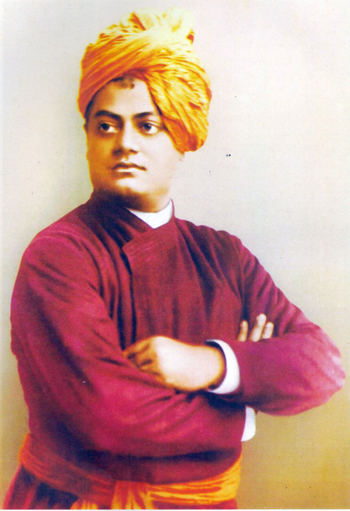 Sisters and Brothers of America Sisters and Brothers of AmericaIt fills my heart with joy unspeakable to rise in response to the warm and cordial welcome which you have given us. I thank you in the name of the most ancient order of monks in the world; I thank you in the name of the mother of religions; and I thank you in the name of millions and millions of Hindu people of all classes and sects. My thanks, also, to some of the speakers on this platform who, referring to the delegates from the Orient, have told you that these men from far-off nations may well claim the honor of bearing to different lands the idea of toleration. I am proud to belong to a religion which has taught the world both tolerance and universal acceptance. We believe not only in universal toleration, but we accept all religions as true. I am proud to belong to a nation which has sheltered the persecuted and the refugees of all religions and all nations of the earth. I am proud to tell you that we have gathered in our bosom the purest remnant of the Israelites, who came to the Southern India and took refuge with us in the very year in which their holy temple was shattered to pieces by Roman tyranny. I am proud to belong to the religion which has sheltered and is still fostering the remnant of the grand Zoroastrian nation. I will quote to you, brethren, a few lines from a hymn which I remember to have repeated from my earliest boyhood, which is every day repeated by millions of human beings: As the different streams having their sources in different places all mingle their water in the sea, so, O Lord, the different paths which men take through different tendencies, various though they appear, crooked or straight, all lead to Thee. The present convention, which is one of the most august assemblies ever held, is in itself a vindication, a declaration to the world, of the wonderful doctrine preached in the Gita: Whosoever comes to Me,through whatsoever form, I reach him, all men are struggling through paths which in the end lead to Me, Sectarianism, bigotry, and it’s horrible descendant, fanaticism, have long possessed this beautiful earth.They have filled the earth with violence, drenched it often and often with human blood, destroyed civilization, and sent whole nations to despair. Had it not been for these horrible demons, human society would be far more advanced than it is now. But their time is come; and I fervently hope that the bell that tolled this morning in honor of this convention may be the death-knell of all fanaticism, of all persecutions with the sword or with the pen, and of all uncharitable feelings between persons wending their way to the same goal. |
About the Author :
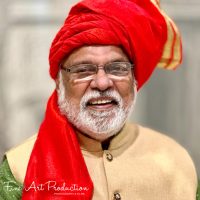 A software engineer by profession, Indian culture enthusiast, ardent promoter of hinduism, and a cancer survivor, Raj Shah is a managing editor of Desh-Videsh Magazine and co-founder of Desh Videsh Media Group. Promoting the rich culture and heritage of India and Hinduism has been his motto ever since he arrived in the US in 1969.
A software engineer by profession, Indian culture enthusiast, ardent promoter of hinduism, and a cancer survivor, Raj Shah is a managing editor of Desh-Videsh Magazine and co-founder of Desh Videsh Media Group. Promoting the rich culture and heritage of India and Hinduism has been his motto ever since he arrived in the US in 1969.
He has been instrumental in starting and promoting several community organizations such as the Indian Religious and Cultural Center and International Hindu University. Raj has written two books on Hinduism titled Chronology of Hinduism and Understanding Hinduism. He has also written several children books focusing on Hindu culture and religion.

